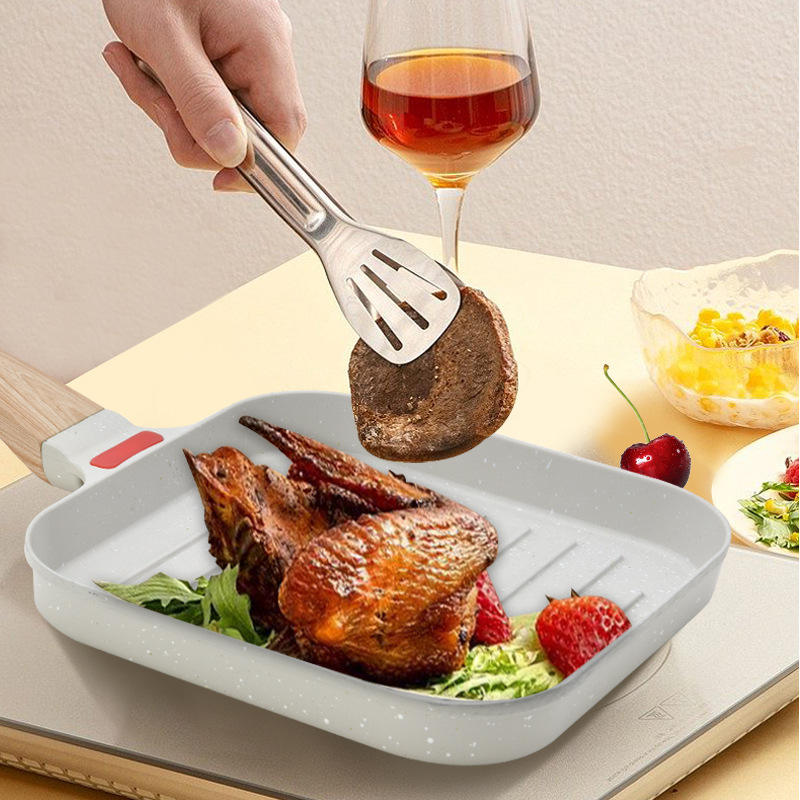Benefits of Using healthy cooking pots and pansWhen it comes to cooking, the pots and pans you use can have a significant impact on the overall healthiness of your meals. Healthy cooking pots and pans are designed to minimize the use of unhealthy fats and oils while still allowing you to cook delicious, flavorful dishes. By investing in high-quality, non-toxic pots and pans, you can ensure that you are not only eating healthier, but also reducing your exposure to harmful chemicals.Materials to Look for in Healthy Cooking Pots and PansWhen choosing healthy pots and pans, it's important to pay attention to the materials they are made from. Some of the best options include stainless steel, cast iron, and ceramic cookware. These materials are durable, non-toxic, and easy to clean, making them ideal for healthy cooking.Non-Stick vs. Traditional CookwareNon-stick cookware has gained popularity in recent years, but it's important to consider the health implications of using these types of pans. Traditional cookware, such as stainless steel and cast iron, may require a bit more care when cooking, but they are generally considered safer and healthier options.Choosing the Right Size and Shape of Cooking Pots and PansThe size and shape of your pots and pans can also impact the healthiness of your meals. Opt for larger, deeper pots for soups and stews, and smaller pans for sautéing and frying. Having a variety of sizes and shapes in your cookware collection can help you cook a wider range of healthy dishes.Easy Cleaning and Maintenance Tips for Healthy CookwareProper cleaning and maintenance of your healthy pots and pans is essential to prolong their lifespan and ensure that they continue to perform well. Avoid using harsh chemicals or abrasive scrubbers, as these can damage the non-stick coating and expose you to harmful toxins. Instead, opt for gentle cleaners and non-abrasive sponges to keep your cookware looking like new.Healthy Cooking Techniques with Pots and PansIn addition to using healthy cookware, it's important to utilize healthy cooking techniques to ensure that your meals are as nutritious as possible. Steaming, sautéing, and roasting are all excellent methods for cooking healthy meals with minimal added fats or oils. Experiment with different techniques to find what works best for you.Benefits of Investing in High-Quality Healthy CookwareWhile healthy pots and pans may require a bit of an initial investment, the long-term benefits far outweigh the cost. High-quality cookware is durable, versatile, and non-toxic, making it a worthwhile addition to any kitchen. By investing in healthy cookware, you can take your cooking to the next level and enjoy delicious, nutritious meals for years to come.Cooking Tips for Using Healthy Pots and PansTo get the most out of your healthy pots and pans, it's important to follow a few simple cooking tips. Preheat your pans before adding ingredients, use lower heat settings to prevent food from sticking, and avoid overcrowding the pan to ensure even cooking. These small adjustments can make a big difference in the healthiness of your meals.Transitioning to Healthy Cooking Pots and PansIf you're new to using healthy pots and pans, making the switch may seem daunting at first. Start by gradually replacing your old cookware with healthier options, and take the time to learn how to properly care for and use your new pots and pans. With a bit of practice and patience, you'll soon be cooking up delicious, healthy meals with ease.ConclusionIn conclusion, choosing healthy cooking pots and pans is an essential step towards creating nutritious, flavorful meals. By selecting high-quality, non-toxic cookware, paying attention to materials and cooking techniques, and properly maintaining your pots and pans, you can enjoy the benefits of healthy cooking for years to come.Quote Inquirycontact us
06. August, 2025










